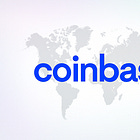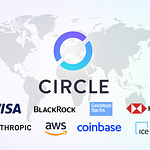Hey, it’s Marc.
Investors are trying to make sense of one of the sharpest, most confusing selloffs of the year. Here are the top 6 narratives right now:
Vitalik Buterin and Ray Dalio warning about crypto’s lack of quantum resistance
The rise of privacy coins such as Zcash, a feature Bitcoin can’t deliver (Jan Van Eck talked about this on CNBC this week).
a major market maker may have taken balance-sheet damage, thinning liquidity when the market needed it most.
a surge in BTC loan liquidations forced mechanical selling across the board.
Cathy Wood, a popular macro investor, reducing her BTC price forecast due to stablecoins “crowing out” the original Bitcoin use case (via CNBC)
And some traders simply blame the extended U.S. government shutdown, which temporarily slowed USD flows into risk assets.
Here’s what is clear: the market is extremely oversold, and we’ve seen this movie before. In every major crypto cycle, 2017, 2021, even back to 2016. We’ve had brutal 30–70% resets in the middle of strong structural trends. And this time, nothing fundamentally broke. Markets simply repriced risk faster than anyone expected.
While traders panic, the future is being built in plain sight.
Our highlights this week:
Kraken raised $800M at a $20B valuation and confidentially filed for an IPO
Aave launched the first mainstream-ready DeFi app
Circle introduced xReserve, solving fragmentation of USDC across chains.
Coinbase revives ICOs in the US
Franklin Templeton expanded to Canton
We’ll unpack all of these highlights below 👇
🚨 We just opened new sponsorship slots for our newsletters & podcast. Want to reach 35k+ digital asset leaders? Contact us here.
Top Signals This Week
Crypto’s quantum threat
Vitalik Buterin’s, Ethereum’s co-founder, warning at DevConnect was simple: Ethereum needs quantum-resistant cryptography within ~4 years. Not because the chain will fail, but because users won’t migrate in time. In the same news cycle, Ray Dalio went on CNBC saying quantum is one of the core reasons Bitcoin won’t become a global reserve asset. [NEWS]
Zoom in: Ethereum is making quantum-safe cryptography a core priority in “The Splurge” phase. It also proposed a system that makes all rollups feel like one unified network. Solana is actively working on quantum resistance too.
And Bitcoin? It’s still debating how, and whether, to do a migration at all. There’s a proof of concept somewhere, but consensus is miles away.
Our take: The global crypto market cap sits at $2.93T, and every dollar of it relies on cryptography that quantum computers could eventually break. If a fault-tolerant quantum machine emerges faster than expected, exposed public keys, old address formats, and archived transaction data become easy targets. A hard fork would be the only realistic path to safety for most networks. And forks are messy. In short: the technical migration is straightforward. The economic and political migration is not.
👉 Upgrade to PRO to receive our deep dive on this and secure a limited 20% discount!
Kraken raises $800M and wants to go public
Kraken just raised $800M at a $20B valuation and confidentially filed to go public. Citadel, DRW and Jane Street led the round, helping Kraken to become a full-stack platform across spot trading, derivatives, equities, tokenised assets, staking, and payments. [RELEASE] [ANALYSIS]
The IPO is the headline. But the real story is why these investors showed up.
Our take? Kraken is about to become the first major U.S. crypto exchange to go public since Coinbase. But here’s what they don’t tell you: This is all preparation for a future where most of financial activity happens on-chain. Kraken has spent the last three years preparing for this, turning itself into a full-stack liquidity platform: spot, derivatives, U.S. stocks and ETFs, custody, staking, OTC, payments (Krak), tokenization, and even its own L2. Because next trillion-dollar companies won’t be “exchanges”. They’ll be liquidity networks that plug millions of users into open, on-chain financial rails.
🙌 Work with us: We arm financial institutions and digital asset leaders with bespoke research, thought leadership to shape the most important conversations, scale trust, and win business.
The Netscape moment of DeFi
Aave ($30.92B TVL) just shipped the first mass consumer finance app that successfully hides the blockchain. No seed phrases. No gas fees. Just a normal app offering up to 9% yield (18x the national savings average) to users. [RELEASE]
So what? This proves that complex financial engineering can be wrapped in consumer-grade UX. It opens the floodgates for a new wave of apps where the “bank” is just code in the background. We’ll likely see a host of protocols moving up the stack to own the customer relationship. If Aave succeeds here, every major DeFi protocol (Uniswap, MakerDAO, Compound) will launch a consumer app within 12 months to defend their liquidity.
Circle’s xReserve makes USDC interoperable
Circle launched xReserve, unifying its $70B+ USDC liquidity into one portable, chain-agnostic standard. Any blockchain can now mint its own native USDC-backed token that’s fully interchangeable with real USDC – no more wrapped, synthetic, or bridged variants. Transfers work through a Circle-run “burn-and-mint” attestation system instead of external bridges. [RELEASE]
Why it matters: xReserve solves the biggest structural issue in stablecoins: fragmentation. Bridged versions like “USDC.e” aren’t fungible at the protocol level, forcing users to swap through liquidity pools, paying slippage and fees while LPs spread capital across multiple copies of the same asset. xReserve collapses that entirely, one pool, one asset, everywhere.
Our take: It also signals a deeper shift: Circle is moving from issuer to infrastructure. By controlling the interoperability layer, Circle commoditizes third-party bridges (LayerZero, Axelar) and positions USDC as the transport standard for on-chain settlement.
Coinbase: ICO’s 2.0
Coinbase launched an end-to-end token sales platform for global retail users (including the United States). With that, it is redesigning how tokens are distributed, priced, and launched. [BLOG]
So what? In 2017-18 ICO boom, projects raised more than $5.6B but operated with almost no rules, no disclosures, and no safeguards. Result: more than 80% of ICO tokens collapsed within 90 days. The SEC’s crackdown effectively shut down public token sales in the U.S. by arguing that most ICOs were unregistered securities. Now, the SEC is officially introducing a new framework on how tokens fit within existing securities laws. And, Coinbase is trying to fix the primary market while fighting over the secondary one with a more transparent, fair, and compliant launch process that can finally bring token fundraising back onshore.
Franklin moves $798M to Canton
Franklin Templeton just expanded its Benji Technology Platform onto the Canton Network. The firm manages $1.69T and will move $798M of AUM onto Canton immediately. [NEWS]
So what? This is a bet on privacy-led tokenisation. Institutional desks can’t expose positions or collateral flows on public chains. Canton solves that through Daml-based smart contracts and Private Contract Stores, giving each participant strict control over who sees what. It’s the first architecture that meets banks’ confidentiality requirements while still enabling cross-institution settlement.
News Flash
HSBC will offer tokenised deposits to US and UAE clients. Link
Mastercard partners with Polygon. Link
Vitalik introduced Kohaku, a privacy-focused tool on Ethereum. Link
Rain acquired Uptop. Link
FDIC considers guidance over tokenised deposit insurance. Link
BNY launches stablecoin reserves fund. Link
Singapore to trial tokenised bills, bring in stablecoin laws. Link
A new US bill would allow Bitcoin tax payments and build a national reserve. Link
Top Boardroom Reads
Crypto Trends Report 2025 (Variant.fund)
Thematic Review on FSB Global Regulatory Framework for Crypto-asset Activities (FSB)
2026 is the year of pragmatic privacy in crypto: Canton, Zcash and more (Cointelegraph)
👉Check out our Crypto Treasury Alpha newsletter here.
💎 Investor Insights (Alpha)
Listen to this episode with a 7-day free trial
Subscribe to 51 Insights to listen to this post and get 7 days of free access to the full post archives.




















